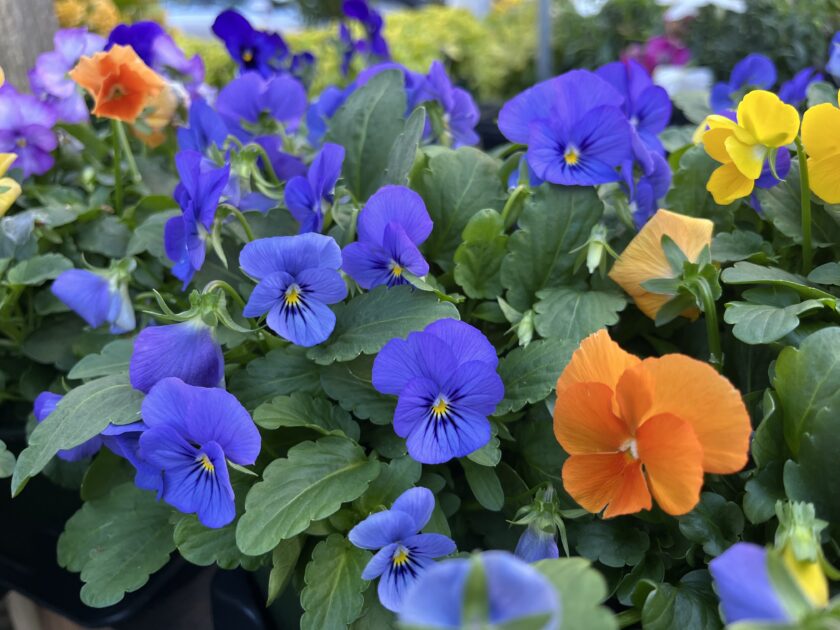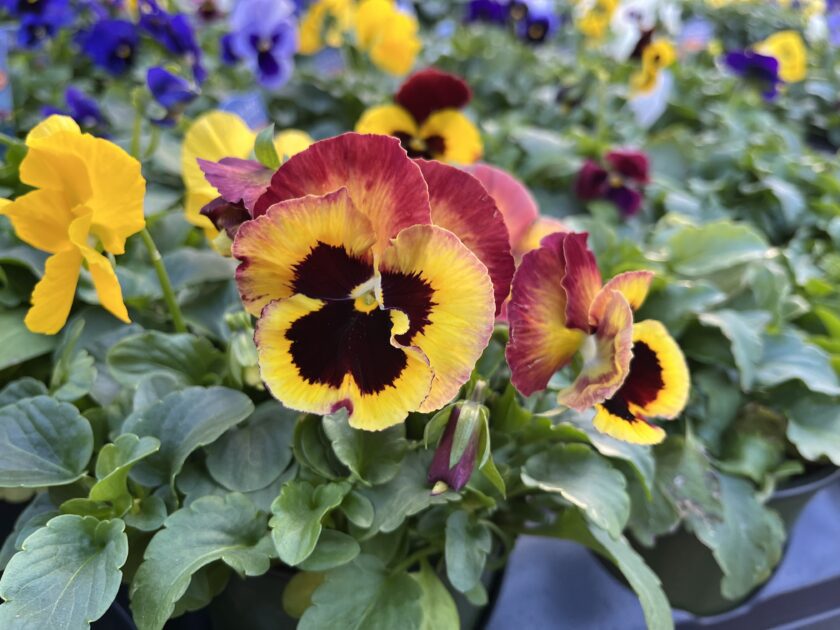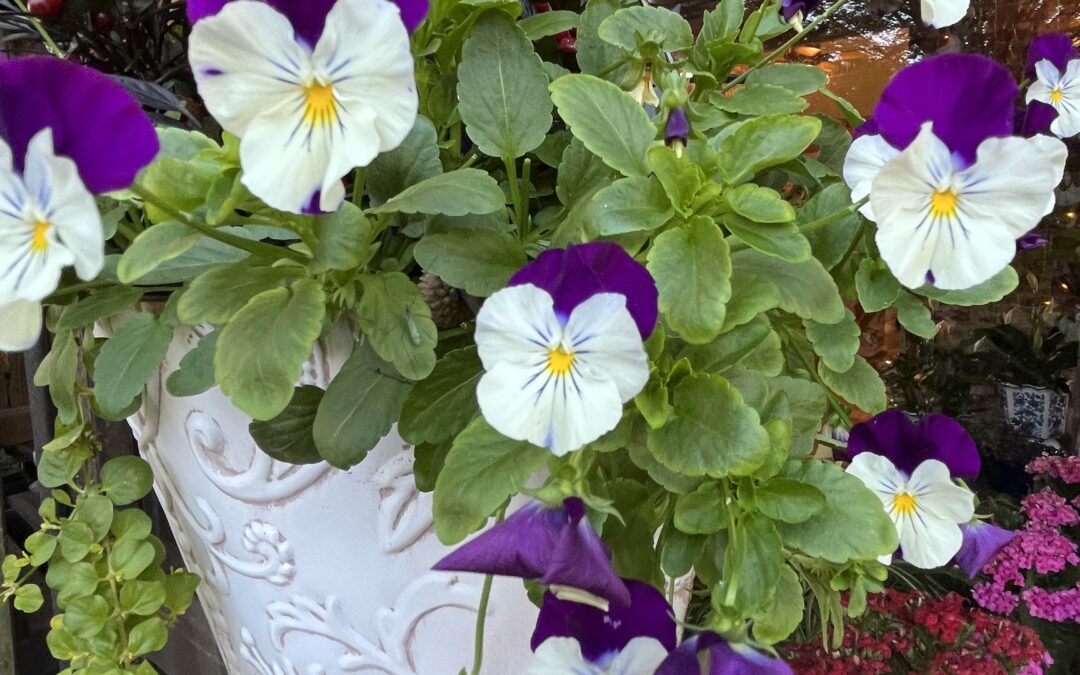If you are looking for a little pick-me-up this fall, choose colorful pansies, whose cheery little faces will put a smile on yours. Pansies can be found in a wide array of colors that will complement many different styles of fall decor. The dainty flowers fit perfectly as container plants to greet your guests or as a welcome pop of color along your garden’s edge. Don’t let their pleasant disposition fool you; these are tough little plants that can stand up to cold weather. On top of all that, they are edible flowers that can adorn cakes and brighten salads.
As we say goodbye to our heat-loving flowers in the garden, pansies rise to the occasion to celebrate fall. They make a lovely outdoor October arrangement coupled with pumpkins and mums, coming in traditional fall color combinations of yellow, orange, and burgundy. However, they can also be found in purple, white and pink. For a spooky arrangement, look for pansies with velvety petals in such a deep purple that they look like magical, black flowers.
Pansies are cool-season plants that are often treated as annuals, but are actually short-lived perennials. They can handle a light frost and may surprise you after winter by showing their faces again in spring. Plant your pansies in early fall, while the soil is still relatively warm. This will give the plants time to establish their roots before the really cold temperatures set in.
For the best fall blooms, plant your pansies in a sunny location in fertile, well-drained soil. While they like to be well-watered, they do not like to have soggy feet. Be sure your pot has drainage holes if you are using them as container plants. Regularly deadhead the flowers for continuous blooms. If your pansies begin to grow long and leggy, simply trim them back for a more compact plant.
You may notice different sizes of pansies (which are in the viola family) at the garden nursery. Not all violas are considered pansies, though the names are often used interchangeably. Pansies are the violas with larger, showy flowers, perfect for a window box display. Johnny-jump-ups are violas with smaller flowers than pansies, but they have more flowers per plant and are more heat-tolerant.
During the coldest part of winter, your pansies will probably take a break from blooming. In a hard freeze, they may succumb to these extreme temperatures and die. However, snow can act as a protective blanket, keeping your pansies safe. I have often pushed snow or leaves away in early spring to find their happy little flowers looking up at me like a toddler with wide eyes and tousled hair waking up from a nap. While finding these mighty little survivors is always a welcome surprise, you can also plant new pansies in spring as soon as the soil can be worked. While fall plantings can handle full sun, pansies planted in spring should be in a partially sunny location, or in a section of your garden that receives morning sun and afternoon shade. Pansies do not like hot weather.


In addition to all of the other delightful attributes of pansies, they are also edible. Of course, you would want to make sure that no pesticides were used when growing these plants, and be sure to wash the flowers before consuming. Fresh pansies or violas add a colorful addition to salads or can be used in herb butter or pressed into a goat cheese log. Sugared violas can be used as a lovely way to decorate cakes, cookies or cupcakes.
We would love to hear about all of the wonderful ways that you have enjoyed pansies. Send your comments, questions or pictures to shorelocalgardener@gmail.com.
Tammy Thornton lives with her husband, children, and crazy pets while enjoying a life of gardening, cooking, and going to the beach.














